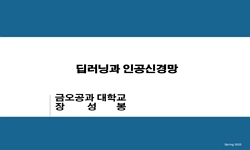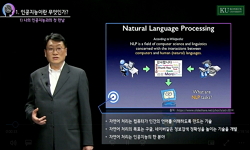현재 자율주행 차량 시장은 3레벨 자율주행 차량의 상용화를 넘어 4레벨 자율주행 차량을 연구, 개발하고 있다. 4레벨 자율주행 차량에서 가장 주목되는 부분은 차량의 안정성이다. 3레벨과 ...
http://chineseinput.net/에서 pinyin(병음)방식으로 중국어를 변환할 수 있습니다.
변환된 중국어를 복사하여 사용하시면 됩니다.
- 中文 을 입력하시려면 zhongwen을 입력하시고 space를누르시면됩니다.
- 北京 을 입력하시려면 beijing을 입력하시고 space를 누르시면 됩니다.
https://www.riss.kr/link?id=A106746783
- 저자
- 발행기관
- 학술지명
- 권호사항
-
발행연도
2020
-
작성언어
Korean
- 주제어
-
등재정보
KCI등재
-
자료형태
학술저널
-
수록면
129-137(9쪽)
-
KCI 피인용횟수
0
- DOI식별코드
- 제공처
-
0
상세조회 -
0
다운로드
부가정보
국문 초록 (Abstract)
현재 자율주행 차량 시장은 3레벨 자율주행 차량의 상용화를 넘어 4레벨 자율주행 차량을 연구, 개발하고 있다. 4레벨 자율주행 차량에서 가장 주목되는 부분은 차량의 안정성이다. 3레벨과 다르게 4레벨의 자율주행 차량은 긴급상황을 차량이 직접 대처해야 하기 때문이다. 본 논문에서는 긴급상황에서의 즉각적인 반응보다는 차량의 목적지가 정해진 순간 사고 가능성이 가장 낮은 경로를 결정하는 Optimized Vehicle Routing System (OVRS)을 제안한다. OVRS는 RSU 통신으로 수집한 도로와 주변 차량 정보를 분석하여 도로의 위험성을 예측하여 주행 중인 차량이 더 안전하고 빠른 길로 주행할 수 있도록 경로를 설정한다. OVRS는 네트워크 라우팅 방식처럼 도로에 있는 RSU를 통하여 도로 상황에 따른 경로 안내를 실행하기 때문에 차량의 안정성을 더욱 높일 수 있다. 실험 결과, OVRS모듈 중 하나인 ASICM의 RPNN은 CNN보다 약 17%, LSTM보다 약 40% 더 좋은 연산 시간을 보였다. 그러나 해당 연구가 PC를 이용한 가상환경에서 실행되었기 때문에, VPDM의 사고 가능성을 실제로 검증하지 못했다. 따라서 향후 사고 데이터 수집으로 인한 VPDM의 정확도 높은 실험과 실제 차량 및 RSU에서 실제 도로를 대상으로 한 실험이 진행되어야 한다.
다국어 초록 (Multilingual Abstract)
Currently, The autonomous vehicle market is researching and developing four-level autonomous vehicles beyond the commercialization of three-level autonomous vehicles. Because unlike the level 3, the level 4 autonomous vehicle has to deal with an emerg...
Currently, The autonomous vehicle market is researching and developing four-level autonomous vehicles beyond the commercialization of three-level autonomous vehicles. Because unlike the level 3, the level 4 autonomous vehicle has to deal with an emergency directly, the most important aspect of a four-level autonomous vehicle is its stability. In this paper, we propose an Optimized Vehicle Routing System (OVRS) that determines the route with the lowest probability of an accident at the destination of the vehicle rather than an immediate response in an emergency. The OVRS analyzes road and surrounding vehicle information collected by The RSU communication to predict road hazards, and sets the route for the safer and faster road. The OVRS can improve the stability of the vehicle by executing the route guidance according to the road situation through the RSU on the road like the network routing method. As a result, the RPNN of the ASICM, one of the OVRS modules, was about 17% better than the CNN and 40% better than the LSTM. However, because the study was conducted in a virtual environment using a PC, the possibility of accident of the VPDM was not actually verified. Therefore, in the future, experiments with high accuracy on VPDM due to the collection of accident data and actual roads should be conducted in real vehicles and RSUs.
목차 (Table of Contents)
- 요약
- Abstract
- 1. 서론
- 2. 관련 연구
- 3. Overview
- 요약
- Abstract
- 1. 서론
- 2. 관련 연구
- 3. Overview
- 4. 실험
- 5. 결론
- REFERENCES
참고문헌 (Reference)
1 서봉수, "제한된 에너지원을 갖는 V2I 시스템의 확률 기반의 데이터 전달 기법에서 RSU의 성능 분석" 한국정보기술학회 16 (16): 69-76, 2018
2 박석규, "도심환경에서 통신 단절 예방을 위한 RRPS(RSU Request Priority Scheduling)설계" 한국정보전자통신기술학회 9 (9): 584-590, 2016
3 YiNa Jeong, "he Lightweight Autonomous Vehicle Self-Diagnosis(LAVS)Using Machine Learning Based on Sensors and Multi-Protocol IoT Gateway" 19 (19): 2019
4 주지훈, "WAVE 표준 기반 차량 통신 시스템의 V2V 시나리오전파 특성 분석" 한국통신학회 42 (42): 1175-1184, 2017
5 Byeongjoon Noh, "Vision-Based Potential Pedestrian Risk Analysis on Unsignalized Crosswalk Using Data Mining Techniques" 10 (10): 2020
6 Dario Vangi, "Vehicle Accident Databases : Correctness Checks for Accident Kinematic Data" 2 (2): 2018
7 복경수, "VANET 환경에서 효과적인 데이터 배포를 위한 RSU 협업 스케쥴링" 한국콘텐츠학회 13 (13): 27-36, 2013
8 한음, "V2I 통신환경을 활용한 연동교차로 교통신호 실시간 제어 연구" 한국ITS학회 17 (17): 59-71, 2018
9 서봉수, "V2I 시스템에서 가변 전송 거리에 기반한 근사 최적의 전달 지연을 제공하는 데이터 전달 방법" 한국정보기술학회 17 (17): 93-100, 2019
10 권정민, "V2I 네트워크 환경에서 Systematic Network Coding을 이용한 데이터 기반 고신뢰 전송 방법" 한국통신학회 45 (45): 327-336, 2020
1 서봉수, "제한된 에너지원을 갖는 V2I 시스템의 확률 기반의 데이터 전달 기법에서 RSU의 성능 분석" 한국정보기술학회 16 (16): 69-76, 2018
2 박석규, "도심환경에서 통신 단절 예방을 위한 RRPS(RSU Request Priority Scheduling)설계" 한국정보전자통신기술학회 9 (9): 584-590, 2016
3 YiNa Jeong, "he Lightweight Autonomous Vehicle Self-Diagnosis(LAVS)Using Machine Learning Based on Sensors and Multi-Protocol IoT Gateway" 19 (19): 2019
4 주지훈, "WAVE 표준 기반 차량 통신 시스템의 V2V 시나리오전파 특성 분석" 한국통신학회 42 (42): 1175-1184, 2017
5 Byeongjoon Noh, "Vision-Based Potential Pedestrian Risk Analysis on Unsignalized Crosswalk Using Data Mining Techniques" 10 (10): 2020
6 Dario Vangi, "Vehicle Accident Databases : Correctness Checks for Accident Kinematic Data" 2 (2): 2018
7 복경수, "VANET 환경에서 효과적인 데이터 배포를 위한 RSU 협업 스케쥴링" 한국콘텐츠학회 13 (13): 27-36, 2013
8 한음, "V2I 통신환경을 활용한 연동교차로 교통신호 실시간 제어 연구" 한국ITS학회 17 (17): 59-71, 2018
9 서봉수, "V2I 시스템에서 가변 전송 거리에 기반한 근사 최적의 전달 지연을 제공하는 데이터 전달 방법" 한국정보기술학회 17 (17): 93-100, 2019
10 권정민, "V2I 네트워크 환경에서 Systematic Network Coding을 이용한 데이터 기반 고신뢰 전송 방법" 한국통신학회 45 (45): 327-336, 2020
동일학술지(권/호) 다른 논문
-
Maximum Product Detection Algorithm for Group Testing Frameworks
- 한국정보전자통신기술학회
- Jin-Taek Seong
- 2020
- KCI등재
-
시민 니즈와 참여 기반의 스마트시티 문제해결을 위한 빅 데이터 활용 절차에 관한 연구
- 한국정보전자통신기술학회
- 장혜정(Hye-Jung Chang)
- 2020
- KCI등재
-
Development of New Optimized Sampling method for 3D Shape Recovery in the Presence of Noise
- 한국정보전자통신기술학회
- Hyeong-Geun Lee
- 2020
- KCI등재
-
주파수 변화 감지 회로를 포함하는 부궤환 루프를 가지는 저잡음 위상고정루프
- 한국정보전자통신기술학회
- 최영식(Young-Shig Choi)
- 2020
- KCI등재
분석정보
인용정보 인용지수 설명보기
학술지 이력
| 연월일 | 이력구분 | 이력상세 | 등재구분 |
|---|---|---|---|
| 2026 | 평가예정 | 재인증평가 신청대상 (재인증) | |
| 2020-01-01 | 평가 | 등재학술지 유지 (재인증) |  |
| 2017-01-01 | 평가 | 등재학술지 선정 (계속평가) |  |
| 2016-01-01 | 평가 | 등재후보학술지 유지 (계속평가) |  |
| 2014-01-01 | 평가 | 등재후보학술지 선정 (신규평가) |  |
학술지 인용정보
| 기준연도 | WOS-KCI 통합IF(2년) | KCIF(2년) | KCIF(3년) |
|---|---|---|---|
| 2016 | 0.32 | 0.32 | 0 |
| KCIF(4년) | KCIF(5년) | 중심성지수(3년) | 즉시성지수 |
| 0 | 0 | 0 | 0.1 |




 ScienceON
ScienceON DBpia
DBpia




